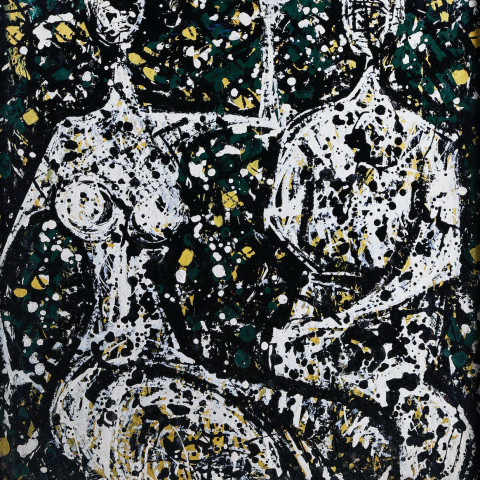Leonard Maurer, known for his abstract and modernist compositions in painting and printmaking, was born in Newark, New Jersey in 1912. Due to his father’s death he left school to work several jobs, including one at a print company which allowed him to develop skills in sketching and printmaking. Working as a sales assistant at a bookshop and a book sales representative also gave him skills he would use later in life.
Starting his artistic career, he then worked for the United States Army as a cartographer for the army infantry before WWII. This time period as a soldier during the liberation of Europe influenced his sketches of that time.
Continuing his career upon his return to the U.S. in 1945, he worked for the U.S. Army Map Service in Washington D.C. He went on to earn a B.F.A. from American University, then taught at Mt. Vernon College as well as serving as the chair of the art department until 1967. Maurer continued making prints, as well as expanding into watercolors, painting, pen and ink, and woodcarving.
Although Maurer tended towards abstraction, his cartography experience led him towards an interest in nature. This interest is seen in his later work which are expressive, natural forms that convey a sense of mystery. Maurer’s most notable technique, though, is the manner in which he highlights his compositions, using accents of rich color to convey a sense of space. An exceptional example of that is Figures, 1949.
Maurer’s work has been widely exhibited across the United States, including the selection of his work being chosen to hang in the White House in 1969. Maurer died in 1976 in Washington D.C.

